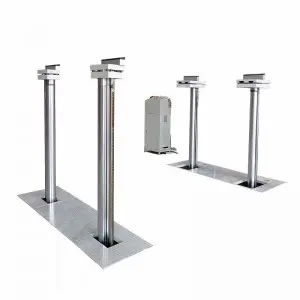****

Understanding the Cylinder: Its Importance in Geometry, Engineering, and Everyday Life
The cylinder is a fundamental geometric shape that plays a critical role in various fields, including mathematics, physics, engineering, and even everyday objects. Its properties, applications, and significance extend far beyond its simple definition as a three-dimensional shape with two parallel circular bases connected by a curved surface. In this article, we will explore the various aspects and applications of cylinders, highlighting their importance in both theoretical and practical contexts.

Understanding the Cylinder: Its Importance in Geometry, Engineering, and Everyday Life
A cylinder is defined as a solid or a hollow shape with two congruent circles or circular bases that lie parallel to each other. The distance between these bases, known as the height (h), and the radius (r) of the circular bases are key components in understanding a cylinder’s characteristics. The most basic types of cylinders are right cylinders and oblique cylinders. A right cylinder has bases that are perpendicular to the height, while an oblique cylinder has bases that are slanted or angled.
One of the primary areas of interest in studying cylinders is their surface area and volume. The formulas used to calculate these properties are essential in various fields, including construction, manufacturing, and natural sciences. The total surface area (A) of a right cylinder is given by the formula:

Understanding the Cylinder: Its Importance in Geometry, Engineering, and Everyday Life
\[ A = 2\pi r(h + r) \]
where \( \pi \) (approximately 3.14159) represents the ratio of the circumference of a circle to its diameter. This formula accounts for both circular bases as well as the curved surface that connects them.
The volume (V) of a cylinder, which represents how much space is enclosed within it, can be calculated using the formula:
\[ V = \pi r^2 h \]
This formula allows engineers and architects to determine how much material is required to construct cylindrical objects, such as pipes, tanks, and silos, or how much substance can be stored within them.
Cylinders are everywhere in our daily lives, manifesting in numerous forms and functions. For instance, the design of beverage cans, pipes, and storage containers utilizes the cylindrical shape due to its structural advantages. The geometry of a cylinder allows for the efficient use of space, making it easier to stack and store cylindrical objects compared to other shapes. This attribute is particularly advantageous in industries keen on maximizing storage capacities while minimizing production costs.
In engineering, cylinders are essential in the creation of hydraulic systems. Hydraulic cylinders employ the principles of fluid mechanics to transmit power and create motion. They consist of a cylindrical barrel that houses a piston, and as hydraulic fluid is forced into this chamber, it pushes the piston, resulting in linear motion. This technology is of paramount importance in construction equipment, automotive brakes, and even aircraft control systems, where reliability and precision are crucial.
Moreover, the concept of a cylinder extends to advanced scientific fields, including thermodynamics and optics. In thermodynamics, cylindrical shapes are often used in the design of reactors and heat exchangers, where controlling the temperature and pressure inside cylindrical chambers is vital for efficient reactions and processes. Similarly, in optics, cylindrical lenses are utilized to focus light in a specific direction, enabling a wide range of applications from projectors to laser systems.
While the mathematical understanding of cylinders is crucial, the artistic aspects cannot be overlooked. In architecture, the use of cylindrical forms enhances the aesthetic appeal of structures. Iconic buildings, like the Guggenheim Museum in New York or the Toronto-Dominion Centre, demonstrate how cylinders can create striking visual effects and unique spatial experiences.
In conclusion, the cylinder is much more than just a simple geometric shape. Its importance spans several disciplines, providing solutions in engineering, architecture, and everyday applications. With its unique properties and versatile applications, the cylinder continues to be a subject of fascination and study, making it a pivotal component in advancing technology and design. Understanding cylinders and their functionalities not only enriches our knowledge of geometry but also inspires innovation across numerous fields. The next time you encounter a cylindrical object, take a moment to appreciate the science, math, and history behind its form and function.quick car jack lift




